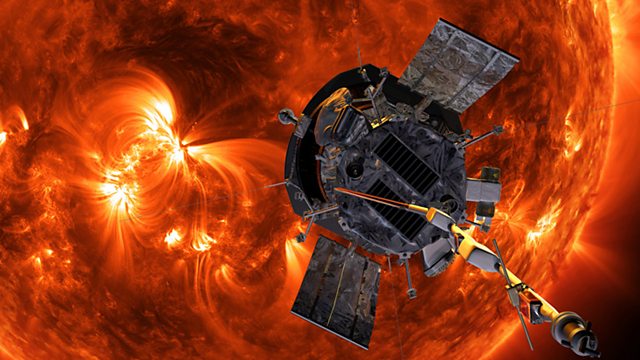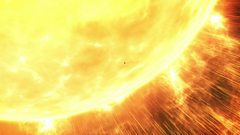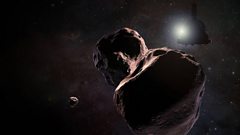Nasa's Solar Probe Launch
Nasa’s Solar Probe launch. Also, 150 years since the discovery of Helium, the trouble with doing science and New Horizon’s probe to visit Ultima Thule in the Kuiper Belt.
Nasa is just a few days away from launching its next science mission, a spacecraft called the Parker Solar Probe that will eventually "touch the sun." If all goes to plan, the probe will take off aboard a rocket on Saturday 11 August from Cape Canaveral in Florida. On its final close approach, in 2025, the Parker Solar Probe will get within six million kilometres of the Sun's surface — so close that it will actually fly through the star's incredibly hot atmosphere, called the corona. It is hoped the mission will provide answers to some of the Sun’s mysteries - why its atmosphere becomes hotter further away from the surface of the sun? How the solar wind of charged particles streaming out into space is born? And what causes the gigantic outbursts scientists call coronal mass ejections?
One Hundred and Fifty Years Since the Discovery of Helium
Helium, the second most abundant element in the universe, was discovered on the Sun before it was found on the Earth. Pierre-Jules-César Janssen, a French astronomer, noticed a yellow line in the Sun's spectrum while studying a total solar eclipse in 1868. Sir Norman Lockyer, an English astronomer, realised that this line, could not be produced by any element known at the time. It was hypothesised that a new element on the sun was responsible for this mysterious yellow emission. This unknown element was named helium by Lockyer.
The Trouble with Doing Science
Marnie Chesterton takes an inside look at the hoops some scientists have to jump through to get their experiments running. In an experiment to look for dark matter, Polish scientist, Pawel Majewski, at Rutherford Appleton Lab has spent 5 years orchestrating the fabrication of a test chamber, a flask called a Cryostat. For the experiment to work the chamber has to be as radiation-free as possible. The trouble is the natural radiation from Earth during the manufacture and transport keep contaminating the metal.
New Horizons to Visit Ultima Thule
Ultima Thule is the name given to an asteroid, or pair of asteroids, in the Kuiper Belt – a ring of rocky bodies at the edge of the Solar System. The New Horizons mission, which captured such amazing data on Pluto, got a mission extension to travel further out. This week the asteroid passed in front of a distant star, giving the team a chance to see more detail of the rocky body, which will be the furthest object visited by a man-made craft, when New Horizon’s gets there in November.
Picture: The surface of the sun, Credit: NASA
Presenter: Roland Pease
Producer: Fiona Roberts
Last on
More episodes
Clips
-
![]()
How Nasa plans to get closer to the Sun than ever before
Duration: 02:24
-
![]()
What is Ultima Thule and why is Nasa watching it?
Duration: 02:58
Broadcasts
- Thu 9 Aug 2018 19:32GMT91Èȱ¬ World Service except News Internet
- Fri 10 Aug 2018 04:32GMT91Èȱ¬ World Service except Australasia, East and Southern Africa, News Internet & West and Central Africa
- Fri 10 Aug 2018 06:32GMT91Èȱ¬ World Service Australasia & East and Southern Africa only
- Fri 10 Aug 2018 10:32GMT91Èȱ¬ World Service West and Central Africa
- Fri 10 Aug 2018 14:32GMT91Èȱ¬ World Service Australasia
- Sun 12 Aug 2018 01:32GMT91Èȱ¬ World Service West and Central Africa
- Mon 13 Aug 2018 00:32GMT91Èȱ¬ World Service except News Internet & West and Central Africa
Podcast
-
![]()
Science In Action
The 91Èȱ¬ brings you all the week's science news.




